White musk mallow Malva moschata f. alba

ABOUT
The plant commonly known as white musk mallow is a charming perennial with a bushy and slightly sprawling habit. Its beauty comes from the delicate blooms it produces, which are pure white in color. These flowers possess a silky texture and a very pleasing, musky fragrance, contributing to its common name. The white musk mallow has leaves that are dissected in a deeply lobed fashion, giving them a feathery appearance. These leaves are light green, adding a gentle backdrop to the showy flowers. The plant is often found forming a mound of foliage from which the flower stalks emerge, proudly displaying the white blooms that are particularly attractive to pollinators such as bees and butterflies. The contrast between the soft white of the petals and the vibrant green of the leaves creates a visually soothing and appealing aesthetic. As a perennial, it will return each year, delighting the observer with its charming flowers and pleasant scent, contributing to the biodiversity of the garden ecosystem.
About this plant
 Names
NamesFamily
Malvaceae
Synonyms
White Mallow, Musk Mallow, White Musk Mallow
Common names
Althaea moschata, Malva alba.
 Toxicity
ToxicityTo humans
White Musk Mallow is typically considered non-toxic to humans and has been used historically for various herbal remedies and culinary purposes. Therefore, ingestion of the White Musk Mallow under normal circumstances does not result in poisoning. However, as with any plant, sensitive individuals may experience adverse reactions such as allergies, and it's always recommended to consume plants with caution if you are not familiar with them.
To pets
White Musk Mallow is not known to be toxic to pets. Similar to its effects on humans, this plant is not typically associated with poisoning in animals such as dogs and cats. However, pet owners should still exercise caution and prevent pets from ingesting plants, as individual animals might have unique sensitivities or allergic reactions.
 Characteristics
CharacteristicsLife cycle
Perennials
Foliage type
Deciduous
Color of leaves
Green
Flower color
White
Height
2 feet (60 cm)
Spread
2 feet (60 cm)
Plant type
Herb
Hardiness zones
5
Native area
Europe
Benefits
 General Benefits
General Benefits- Attracts Pollinators: White Musk Mallow is known to attract bees and butterflies, which are important for pollination and maintaining healthy ecosystems.
- Ornamental Value: With its delicate white flowers, the plant adds aesthetic appeal to gardens and landscapes.
- Low Maintenance: White Musk Mallow is considered easy to care for and requires minimal upkeep once established.
- Drought Tolerant: It is able to withstand periods of dryness, making it suitable for water-wise gardening.
- Edible Parts: Certain parts of the plant, like leaves and flowers, are edible and can be used in salads and other culinary dishes.
- Soil Improvement: White Musk Mallow can help to improve soil condition over time through its natural life processes and organic matter contribution.
- Wildlife Habitat: The plant can provide shelter and food for various small wildlife like insects and birds.
- Adaptable Growth: It can thrive in a variety of soil types and environmental conditions, contributing to its versatility in different gardens.
 Medical Properties
Medical Properties- Anti-inflammatory: Malva moschata f. alba may have properties that help reduce inflammation, potentially benefiting conditions like skin irritation or inflammation.
- Emollient: The plant is known for its soothing effect on the skin and mucous membranes, making it useful for treating minor skin conditions.
- Expectorant: It has been traditionally used to help loosen and expel phlegm from the respiratory tract.
- Laxative: In traditional herbal medicine, it has been used to promote bowel movements and relieve constipation.
- Diuretic: The plant may facilitate the production of urine, helping in the elimination of excess water and salts from the body.
 Air-purifying Qualities
Air-purifying QualitiesThis plant is not specifically known for air purifying qualities.
 Other Uses
Other Uses- As a natural fabric dye: The flowers and leaves of Malva sylvestris can be used to produce a range of subtle colors for dyeing fabrics.
- In companion planting: This plant can be grown alongside vegetables in gardens to attract beneficial insects and improve biodiversity.
- As an ornamental focus in flower arrangements: The delicate white flowers can be used to add visual interest and a wildflower feel to floral designs.
- Erosion control: With its spreading habit, the plant can help to stabilize soil in areas prone to erosion.
- Culinary garnish: The flowers can be used as an edible decoration for salads and desserts.
- As a natural potpourri ingredient: Dried flowers contribute a mild, pleasant fragrance to homemade potpourri mixes.
- In crafting: Dry the stems and flowers to create botanical ornaments or add a unique touch to handmade papers.
- Green manure: The plant can be chopped and turned into the soil to act as green manure, improving soil fertility.
- Livestock fodder: In some rural areas, the plant is occasionally used as forage for animals, though it is not a common fodder crop.
- As a muse for artists and photographers: Due to its beauty, it often serves as a subject for those practicing botanical illustration or nature photography.
Interesting Facts
 Feng Shui
Feng ShuiThe Musk Mallow is not used in Feng Shui practice.
 Zodiac Sign Compitability
Zodiac Sign CompitabilityThe Musk Mallow is not used in astrology practice.
 Plant Symbolism
Plant Symbolism- Gentleness: Malva moschata f. alba, commonly known as Musk mallow, often embodies gentleness due to its soft, delicate white flowers.
- Calm: The soothing color and subtle fragrance of the Musk mallow can symbolize calmness and peace.
- Love: As with many flowers, the Musk mallow can be a symbol of love, expressing the giver's affectionate feelings towards the receiver.
- Health: Historically, the Musk mallow has been used for its medicinal properties, which can make it a symbol of health and healing.
- Persistence and Survival: Due to its ability to thrive in various conditions, it can represent resilience and the will to survive.
- Grace: The elegant form and structure of the plant signifies grace and beauty.
 Water
WaterThe Musk Mallow should be watered deeply to encourage a strong root system, about 1 inch of water per week, either from rainfall or manual watering. During hot and dry spells, you might need to water twice a week, ensuring that you provide enough moisture without causing waterlogging. It is preferable to water this plant in the morning so that the foliage has time to dry out over the course of the day, reducing the risk of fungal diseases.
 Light
LightMusk Mallow thrives best in full sun, meaning at least 6 hours of direct sunlight per day. It can tolerate partial shade, especially in hot climates, but flowering may be reduced. The ideal spot for this plant would be an area with clear exposure to the sun for the majority of the day with some afternoon shade in exceptionally hot regions.
 Temperature
TemperatureMusk Mallow prefers temperate climates and grows well in temperatures between 60°F and 75°F. It can withstand temperatures down to around 20°F but may die back in colder climates, regrowing in spring if roots are well-protected. The highest temperature this plant can endure without stress is about 90°F.
 Pruning
PruningThe Musk Mallow should be pruned to remove dead or damaged stems, which helps to maintain plant health and encourages bushier growth. Pruning is best done in the late winter or early spring before new growth begins. Deadheading, or the removal of spent flowers, should be done regularly throughout the blooming season to promote continued blooming.
 Cleaning
CleaningAs needed
 Soil
SoilMusk Mallow prefers well-draining soil with a neutral to slightly alkaline pH, ideally between 6.0 and 7.5. The best soil mix can be achieved by blending garden soil with compost and some sand or grit to improve drainage.
 Repotting
RepottingMusk Mallow, being a perennial, typically doesn't require frequent repotting. It should be repotted once it outgrows its current container or every 2-3 years to refresh the soil.
 Humidity & Misting
Humidity & MistingMusk Mallow is tolerant of a wide range of humidity levels and does not require any specific humidity conditions to thrive as long as it is planted outdoors in its preferred environment.
 Suitable locations
Suitable locationsIndoor
For Musk Mallow, ensure bright light and good air circulation.
Outdoor
Plant Musk Mallow in full sun and well-draining soil.
Hardiness zone
Musk Mallow is suitable for USDA zones 5-9.
 Life cycle
Life cycleMalva moschata f. alba, commonly known as White Musk Mallow, begins its life cycle as a seed, which germinates in spring when temperatures become conducive to sprouting. The seedling grows into a rosette of leaves at ground level, where it undergoes vegetative growth. After establishing a strong root system, it enters the flowering phase in late spring to summer, producing white, musk-scented blossoms which attract pollinators such as bees and butterflies. Following pollination, the plant develops seed pods that eventually dry and release seeds, ensuring the continuation of the species. In the autumn, the above-ground parts of the plant die back, but the plant can continue to live as a perennial from its rootstock, resprouting the following spring. The White Musk Mallow then re-enters the vegetative stage, beginning a new growth cycle.
 Propogation
PropogationPropogation time
Spring-summer
The most popular method for propagating the Musk Mallow (Malva moschata f. alba) is by seed. Seed propagation is best done in the spring after the last frost when the soil has warmed up. Sow the seeds directly into the ground, placing them at a shallow depth of about 1/4 inch (about 6 millimeters). These should be spaced approximately 18 inches (45 centimeters) apart to allow ample room for growth. Once the seedlings have emerged and grown sufficiently, they should be thinned out to avoid overcrowding. It's vital to keep the soil moist during germination, which usually takes between two to three weeks. As a hardy perennial, the Musk Mallow will then begin to establish itself and will often reseed, potentially creating a self-sustaining population in conducive growing conditions.
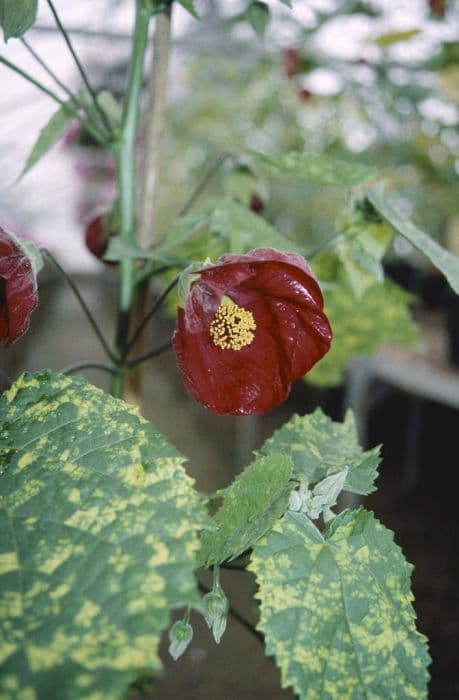
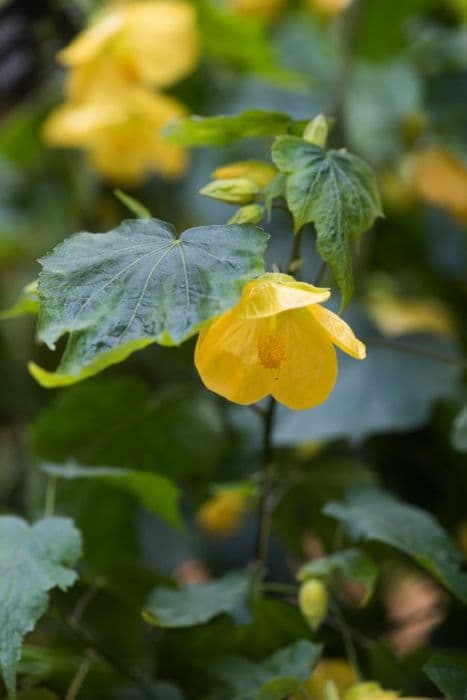
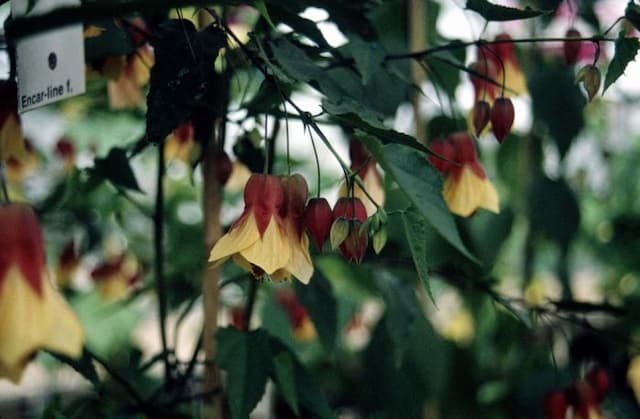
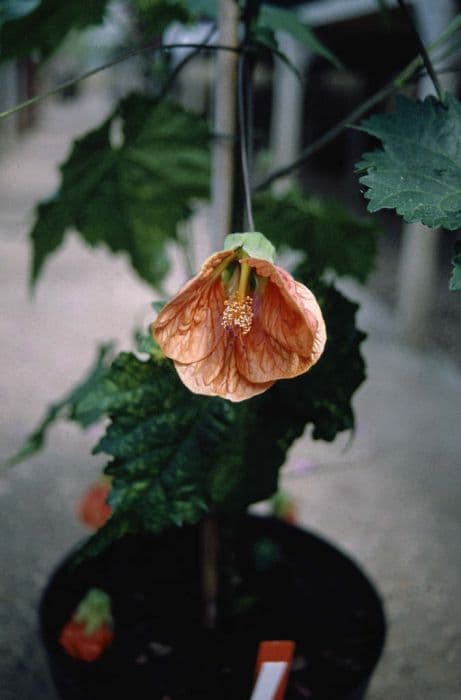
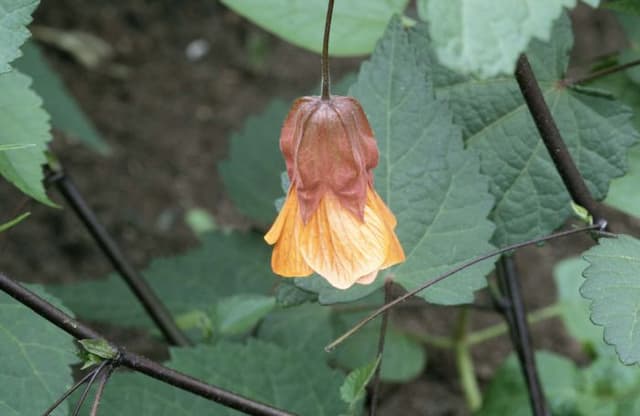

![Abutilon [Yellow Trumpet]](/_next/image?url=https%3A%2F%2Fplants-admin.emdemapps.com%2Fimages%2Fplants%2F%2Fimages%2F604b5caa8b4fb.png&w=640&q=75)

